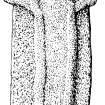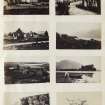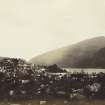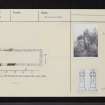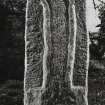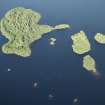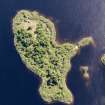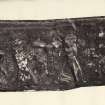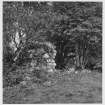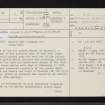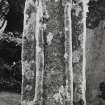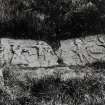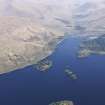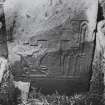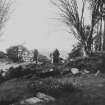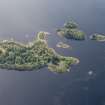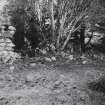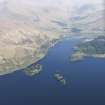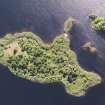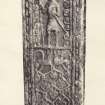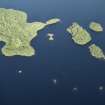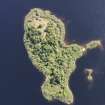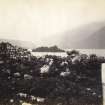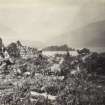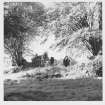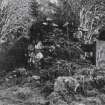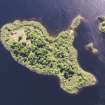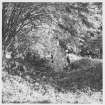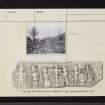Pricing Change
New pricing for orders of material from this site will come into place shortly. Charges for supply of digital images, digitisation on demand, prints and licensing will be altered.
Upcoming Maintenance
Please be advised that this website will undergo scheduled maintenance on the following dates:
Thursday, 9 January: 11:00 AM - 3:00 PM
Thursday, 23 January: 11:00 AM - 3:00 PM
Thursday, 30 January: 11:00 AM - 3:00 PM
During these times, some functionality such as image purchasing may be temporarily unavailable. We apologise for any inconvenience this may cause.
Loch Awe, Inishail Old Parish Church
Cemetery (Medieval), Chapel (Medieval), Church (Medieval)
Site Name Loch Awe, Inishail Old Parish Church
Classification Cemetery (Medieval), Chapel (Medieval), Church (Medieval)
Alternative Name(s) Loch Awe Church; St Findoca's Chapel
Canmore ID 23456
Site Number NN02SE 2
NGR NN 09801 24475
Datum OSGB36 - NGR
Permalink http://canmore.org.uk/site/23456
- Council Argyll And Bute
- Parish Glenorchy And Inishail (Argyll And Bute)
- Former Region Strathclyde
- Former District Argyll And Bute
- Former County Argyll
NN02SE 2.00 09801 24475
NN02SE 2.01 NN 098 244 Sculptured Stone
NN02SE 2.02 Cross
See also NN12NE 8 and NN12SW 8.
(NN 0980 2447) Church (NR) (remains of). Cross (NR).
OS 1:10,000 map, (1976)
The remains of the old parish church of Inishail, a wooded island in the northern part of Loch Awe, stand within a burial ground near the west end of the island. It served a parish which included the adjoining islands and parts of the west and south-east shores of the loch, the parish being united with that of Glenorchy in 1618.
Services were conducted regularly on the island until 1736 when a new church was built at Cladich (NN 108 233). The medieval church on Inishail was described as runious in the late 18th century.
The church is rectangular on plan measuring 15.6m from east to west by 4.6 metres transversely within walls 0.84 metres thick. The building is extremely decayed the walls being reduced almost to ground level except near the west end where they stand, in places, to a height of about 2.1 metres. The masonry is of massive rubble blocks, well coursed, with small pinnings. The entrance-doorway was situated near the west end of the south wall where part of the threshold and the lowest course of the west side remain in position. There is evidence for the possible existence of a church during the 13th century, but the existing remains are probably late medieval.
The burial ground is enclosed within a modern boundary fence, beyond which the scanty remains of an earlier dry-stone wall can be traced on the south and south-west.
An early Christian decorated cross which formerly stood in the graveyard has been re-erected on a pedestal inside the church. This cross is scheduled. A number of medieval decorated stone slabs are to be found in the burial ground and within the ruins of the church. The earliest post-Reformation tombstones are of mid-18th century date. References to a Cistercian nunnery are fanciful, being based on the OSA (1791-9), often unreliable
RCAHMS 1975; I B Cowan and D E Easson 1976; W Douglas 1912.
Field Visit (4 November 1969)
As described.
Surveyed at 1:10,000 scale.
Visited by OS (W D J) 4 November 1969
External Reference (20 July 1971)
Mediaeval. Fragmentary remains. Rubble.
OSA
NSA
Groome
'Fasti'
Muir 'Characteristics' P56
Argyll CC 'List'.
RCAHMS Vol 2 No 247
Ruin.
Parish kirk of Innishail until replaced by present kirk near Innistrynish. 1773
In ancient burial ground of MacArthurs.
Information from Historic Scotland, 20 July 1971
Note
NMRS NOTES
Inishail on Loch Awe.
Believed to be a Cistercian Abbey dependant on Dunkeld.
NMRS Robert Brydall drawings - large - 3 drawings of sculpted slabs.
- elevations of no. 1, 2, 3, and 13 in Lorn Inventory






































